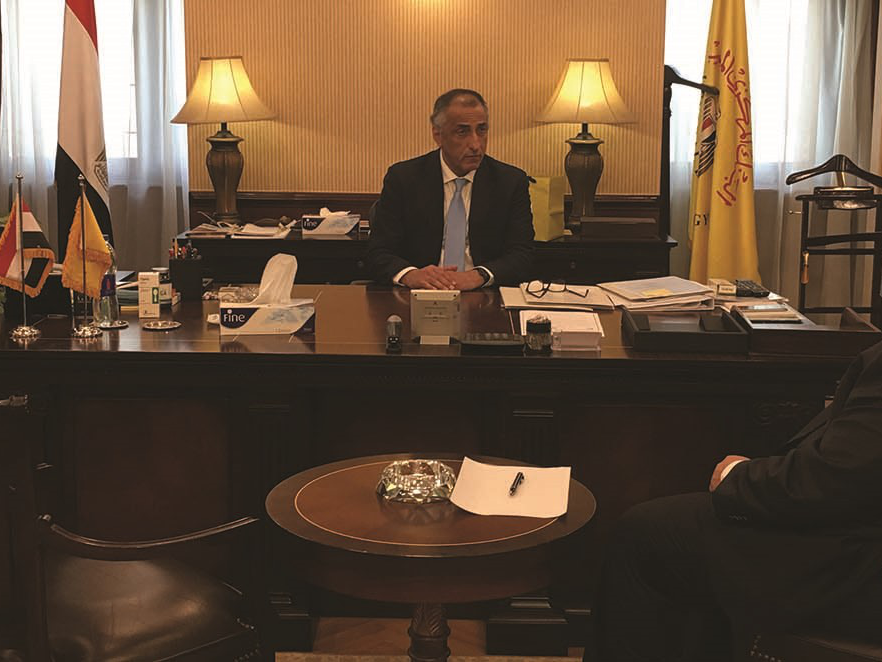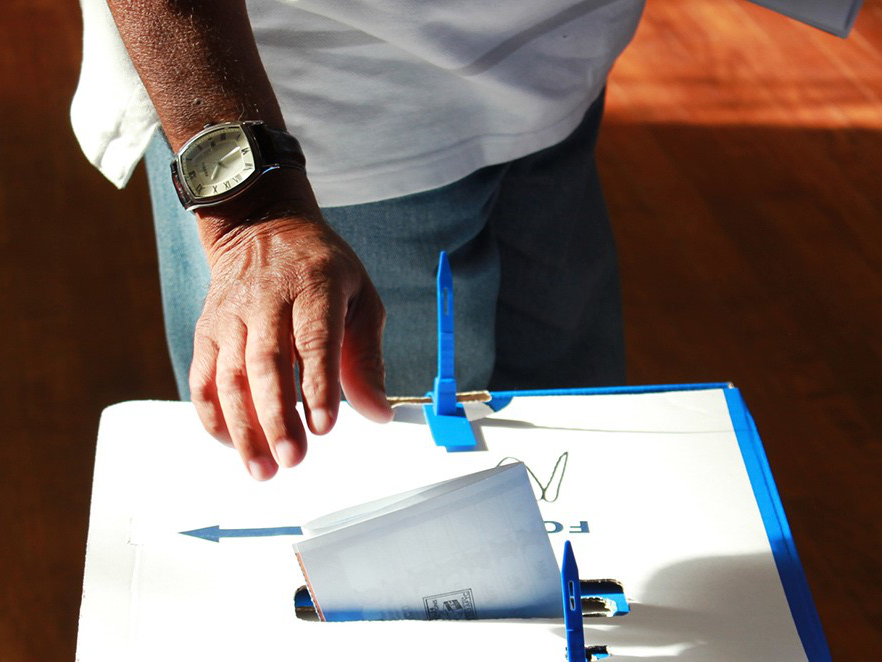Sherif Elkholy: Mr. Governor, when you were appointed as the Governor of the Central Bank in 2015 there was already significant distortions and illiquidity in Egypt’s currency market. How did the decision to float the Egyptian Pound (LE) in November last year come about and what was the thought process underlying it?
H.E. Mr. Tarek Amer: It was clear to me since the beginning that the fixed exchange rate regime was unsustainable. This was evident from the emergence of parallel foreign exchange markets as well as the deterioration of the external balance of goods and services in a way that was hardly financeable given weak appetite for foreign investment in Egypt at the time. While external factors outside the CBE’s control contributed to the deterioration- such as the drop in tourism- an adjustment mechanism was necessary to re-balance supply and demand of foreign currency to restore an orderly functioning foreign exchange market, attract foreign investors, and improve inflows and liquidity. In March 2016, the CBE decided to devalue the Egyptian pound by 13% in order to quell the distortions that had emerged in the domestic foreign currency market. However, this was not enough, for we realized that in order to set the Egyptian economy on a sustainable path we had to develop a comprehensive, all-encompassing economic program. Reform is a belief, and a conviction above everything else. As such, the CBE and the Government embarked on developing a truly multi-faceted program aimed at addressing macroeconomic vulnerabilities while promoting inclusive growth and job creation. Significant policy adjustments were needed in order to restore confidence in the Egyptian economy such as fiscal consolidation and ensuring public debt sustainability. At the heart of these policy adjustments was the decision to liberalize the foreign exchange regime. This enormous shift was aimed at improving Egypt’s competitiveness and allowing for the deepening of foreign currency liquidity while streamlining activity into the formal channels.
SE: Is the flotation of the LE achieving its desired impact on economic and investment activity and is the CBE determined to uphold its position on letting the exchange rate be freely determined by the forces of supply and demand?
HETA: We believe that an open market with a liberal exchange rate is the optimal solution for providing a sustainable path for Egypt’s economic stability, and, for this reason, we remain committed to the steps we have taken. In fact, there is a strong political will at the highest level in the country to see these reforms through, and without that strong political will the reform program wouldn’t have been implemented. The results of the liberalization have already started to positively reflect on the recent indicators of economic and investment activities. But first let me summarize what the program is about; Egypt’s economic reform program is supported by the USD12bn three-year extended fund facility (“EFF”) Agreement with the IMF. The program aims at accomplishing 4 main keystones:
- Rectifying the macroeconomic imbalances with strong fiscal conditions, better monetary policy conditions, and eliminating FX distortions;
- Anchoring the structural reforms in sound microeconomic policies that provide a social safety net through channelling more resources into pro-poor social programs;
- Promoting inclusive growth through creating new job opportunities and raising exports; and
- Closing the financing gap by improving the profile and build-up of the country’s foreign reserves.
There has been some progress in each area over the second quarter of the fiscal year (“FY”) 2016/17. Progress on keystones 1 and 4 has perhaps been the most pronounced as we have started to see signs of external sector rebalancing. For example, during the period of October-December 2016, the overall balance of payments surplus jumped to US$ 5.1 billion (from US$ 1.9 billion in July-September 2016), confirming early signs of external adjustment post the decision to liberalize the exchange rate market in November 2016. The current account registered its first improvement on an annual basis since Q1 FY 2014/15, and the capital and financial account registered a net inflow of US$ 10.5 billion (vs. US$ 4.5 billion in the same period for the previous year). The current account improvements were mainly driven by a gradual recovery in exports, and a recovery in workers’ remittances which started to be channelled through the formal banking market following the liberalization. Net inflows from tourism also recovered for the first time since Q2 2015/16.
More recently, the following signs continue to provide reassurances that Egypt is now on the right track following the reforms. In January 2017 non-oil exports rose by 34.3% year-on- year, workers’ remittances increased by 23.0% year-on-year, and tourism revenues rose by 73.4% year-on-year. Foreign exchange shortages that used to hinder economic activity have been eliminated, making Egypt more competitive. Investors’ appetite for various Egyptian asset classes witnessed a marked improvement, and this has directly contributed to the rebuilding of Egypt’s foreign currency reserves. Egypt’s gross foreign reserves figure amounted to LE 26.5 billion in February 2017, the highest figure since June 2011. So yes, I am very proud of what has been achieved so far!
SE: How does the liberalization of the LE fit into Egypt’s overall comprehensive economic reform program?
HETA: As I said earlier, we are on a journey of comprehensive economic reform. To do that, we had to change mindsets and break legacy policy taboos. The overall objective of Egypt’s economic reform agenda is to return to sustainability and the new exchange rate regime is in line with this overall objective. Before the reform program, Egypt’s current account deficit had risen to 5.9 percent of GDP during FY 2015/16 and was hardly financeable under the old exchange rate regime, resulting in one-sided exchange rate movements and expectations as well as constant cost-push pressures on inflation. Starting our comprehensive reform plan quickly changed that environment and it put the reputation and the credibility of the Egyptian economy back on track.
On the other hand, the new exchange rate regime and the associated strong depreciation of the Egyptian pound against trading partner currencies is only expected to conduct temporary cost-push pressures on inflation, subsequently enabling low and stable inflation over the medium term in line with the CBE’s mandate, in addition to gains in terms of sustainability and a lower current account deficit as a percent of GDP. Indeed, monthly inflation during February 2017 dropped to 2.6 percent after averaging 4.0 percent in the preceding three months, suggesting diminishing cost-push pressures and confirming the short-term nature of the inflationary shock. Given the recent level shift of the consumer price index, annual inflation is expected to drop when favourable base effects kick-in, supported by monetary policy actions and receding monthly inflation rates.
SE: Since the liberalization of the FX regime, the stock market has reacted very positively, with a strong recovery in foreign investors’ participation. We have also seen strong appetite for Egypt’s USD 4bn multi-tranche international bond issuance which was over 3x over-subscribed. Do you feel that the flexible exchange rate environment is directly paving the way for the reduction of Egypt’s risk premiums and recovery of FDI?
HETA: Yes indeed. The liberalized exchange rate regime ignited more demand for various Egyptian asset classes by foreign investors and partly contributed to the rebuilding of Egypt’s foreign currency reserves. Egypt’s risk premiums have tightened since the liberalization. As of now Egypt’s 5 year CDS spread stands at 3.32%, down from 4.75% before the liberalization of the foreign exchange regime. This strongly indicates an improvement in the risk sentiment towards Egypt. Also, yields on Egypt’s Eurobonds have tightened across all maturities since the liberalization due to an improvement in the sentiment and the recovery of foreign investors’ appetite for Egypt.
On the topic of foreign direct investment… foreign investment on the EGX, which was on a negative trend before the liberalization, switched to show a net positive purchase position of US$ 395 million from October-December 2016 (against net sales of US$ 134.8 million in the corresponding period a year earlier). The EGX 30 index increased by 53% since November 2016, surpassing most emerging markets indices over the same period. Foreign investments in Egyptian treasury bills switched to reflect a net inflow, recording net purchases of US$ 631.7 million (against net sales of US$ 10.3 million in the corresponding period the previous year).
SE: In light of the ongoing reforms and the improving macro picture for Egypt, what can you say to foreign investors who are seeking comfort on their ability to freely repatriate profits out of Egypt as a precondition to increasing their investments in the country?
HETA: I would say the following… this country has always had huge potential; it just needed the correct policies to unlock that potential and turn it into real opportunities. The President has made it clear that we are committed to our reform program and to unlocking Egypt’s potential. This strong political will should provide clear reassurances to investors. Foreign exchange shortages and restrictions that used to hinder economic activity have been eliminated post the liberalization as banks became in a solid position to accommodate new demand for foreign currency and equally important to address backlogs of dividends and trade, amongst others. For example, portfolio investors’ backlog that had reached US$ 416 million before the liberalization of the exchange rate was cleared swiftly post 3 November 2016. Foreign companies and portfolio investors are now freely repatriating their profits. Moreover, foreign currency liquidity has substantially improved since the liberalization and our foreign exchange interbank market is now showing persistent signs of a deeper and more liquid market, allowing banks as mentioned above to cater to demand for foreign currency from different market participants such as importers, portfolio investors, and foreign direct investors.
In addition, Egypt’s ability to tap international markets improved markedly as evidenced by the successful issuance of its Eurobonds during the first quarter of 2017. Investors’ appetite has strongly recovered as witnessed by the oversubscription and pricing of our bond issuance as well as the huge inflows into our local equity and fixed income markets. This recovery in investor sentiment is also evidenced by the surge of capital inflows into the country and the increase in banks’ resources; our international reserves have increased creating a virtuous cycle of increased confidence in our economy and in our foreign currency market. The parallel market has also been eliminated. So in summary, Egypt has been and will always be fully committed to meeting its obligations, and now the Egyptian economy has turned a corner and the market should be fundamentally more attractive for investors. We will see these reforms through!
SE: Your Excellency, on behalf of Actis thank you very much for your time and for your invaluable insights.
HETA: You are very welcome; I wish you continued success in Egypt.






